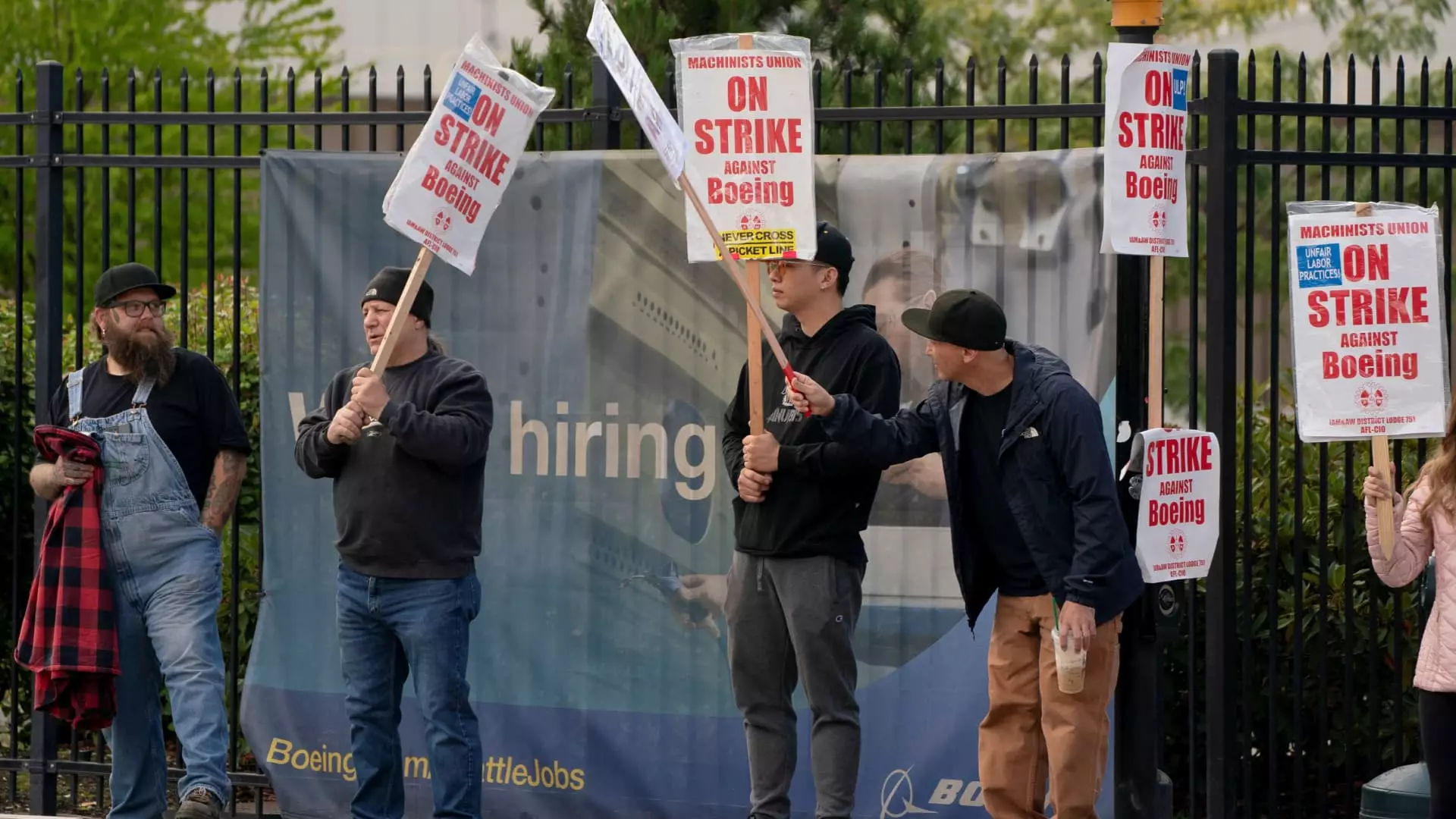In the ever-volatile world of aerospace manufacturing, Boeing finds itself at a pivotal moment, grappling with a labor strike that has halted production and forced the company to implement emergency measures. With over 30,000 factory workers walking off the job after rejecting a tentative labor agreement, the repercussions are felt not only within the company but also across its extensive network of suppliers. The context of these developments raises vital questions about the broader implications for Boeing’s operational strategy and financial stability.
Emergency Measures and Cash Preservation
In response to the ongoing strike, Boeing has announced a series of drastic measures aimed at conserving cash and maintaining operational viability. A hiring freeze has been instituted, alongside a suspension of nonessential travel and a significant reduction in supplier expenditure. CFO Brian West emphasized the importance of these actions in a note to staff, highlighting that Boeing’s business is under considerable strain due to the labor disruption. This multifaceted approach underscores a shift toward a more conservative financial strategy, prioritizing immediate liquidity over expansion or investment.
Boeing’s decision to pause most purchase orders for key aircraft models such as the 737 Max, 767, and 777 illustrates an acute awareness of the cascading effects that a prolonged strike can have on its supply chain. Hundreds of suppliers depend on Boeing’s manufacturing activities, suggesting that the ripple effect of this labor stoppage could be profound. This indicates not just a challenge for Boeing itself, but also poses a significant risk to an industry heavily interconnected through complex supply chains.
The financial fallout from the strike remains uncertain, primarily influenced by its duration. Boeing’s efforts to conserve cash are critical, particularly as they face mounting debts that could be exacerbated by longer-term disruptions. Earlier in the year, issues such as a serious door-panel incident resulted in substantial financial losses, with the company reportedly burning through $8 billion in just the first half of the year. Such a precarious financial state raises alarms about the sustainability of Boeing’s operational model and its ability to rebound from recent challenges.
The threat of downgrades by credit agencies like Moody’s and Fitch adds another layer of complexity to Boeing’s predicament. A potential rating downgrade would only increase the company’s borrowing costs, further straining its financial resources. Key decisions on operational management, including possible temporary furloughs, indicate a move towards austerity that could have lasting effects on workforce morale and company culture.
Looking ahead, achieving a new labor agreement is imperative for Boeing, not only to resume normal operations but also to stabilize its financial footing. New CEO Kelly Ortberg’s eagerness to return to the bargaining table reflects a strategic acknowledgment that swift negotiation is essential. The challenge, however, lies in addressing worker concerns effectively while navigating the harsh realities of the company’s financial constraints.
Boeing’s current challenges illustrate the intricate balance between labor relations and financial management in a high-stakes industry. How the company responds to this pivotal moment will shape not only its immediate future but also its long-term viability as a major player in aerospace manufacturing. The outcome of these negotiations could be decisive, potentially altering Boeing’s operational landscape for years to come.

